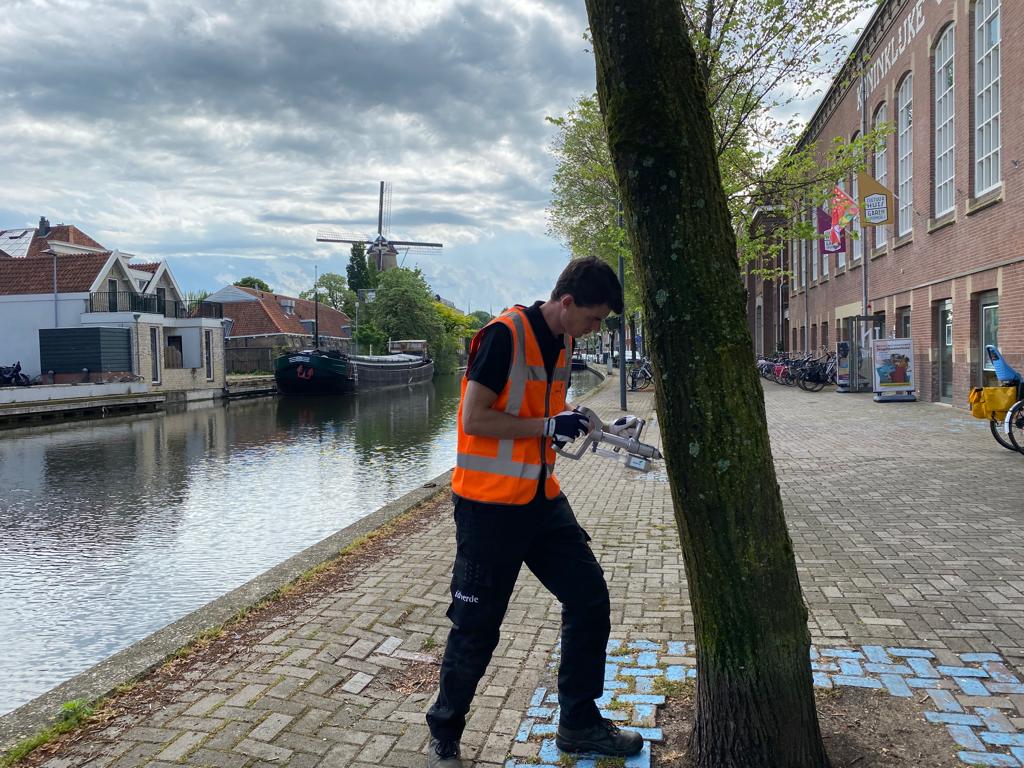In the Netherlands we treat about 20,000 elms a year for about 200 different customers. In order to get this all on the right track, we start all preparations as early as January. Planning the execution, making and sending tenders, processing orders, ordering necessary materials, keeping records, keeping the GIS environment up to date and so on.
To ensure that the elms are treated as quickly and effectively as possible in the spring, each contractor must know exactly what to do. Instructions must be given, it must be clear which elms are to be treated, who the contact persons are and what prior knowledge is needed to be well prepared for the job. In addition, everyone needs the right tools for the job: injector and all accessories, mobile refrigerator, weekly sufficient agent for injecting.

In recent years we have invested a lot of time and effort in digitizing all the elms we treat. However, this has led to the result that we can now work entirely from ArcGIS and it has become much easier to find the right elms and during the execution we get a nice overview of the work done and what still needs to be done. It is hard to imagine that a few years ago we were still working with printed maps and city plans to get our bearings and keep track of all the changes. Even though that has been the common practice from the beginning.
The great thing about this project is that for several weeks we work together with almost all colleagues of idverdeBomendienst to achieve a good result. All teams (think secretariat, implementation, team BTA and team Z&A have their specific tasks and essential role in the whole process. In addition, as project leader, I am always in close contact with those doing the work to assist them mentally and sometimes physically. Over the years, I have always tried to handle some elms at various locations as well in order to stay close to the execution and be useful during all the phone calls needed to keep everything running.
The main purpose of treating the elms is of course to protect as many elms as possible from Dutch elm disease. This is also what we communicate to all our clients but also to all the people who happen to walk by and look with amazement at what we are doing. We always have to explain that we administer a biological vaccine to protect the tree for a year against one of the most deadly fungi for our elms. This always makes for great conversations and mini-courses for those interested. The fact that we want to protect so many beautiful trees always edits smiles on faces that were initially a bit suspiciously watching.
We also have a lot of contact with all clients. Over the years we have been able to build a good relationship with many clients where a mutual trust has been established. Many private customers always look forward to our visit and are proud of their beautiful elms in the garden.
The days when everyone is working in the field does mean that we have to be constantly focused. The number of phone calls peaks during the month of May. But when finally the last elms are treated, a moment of relief comes and the weeks have flown by.
This blog was written by Robert Prins

